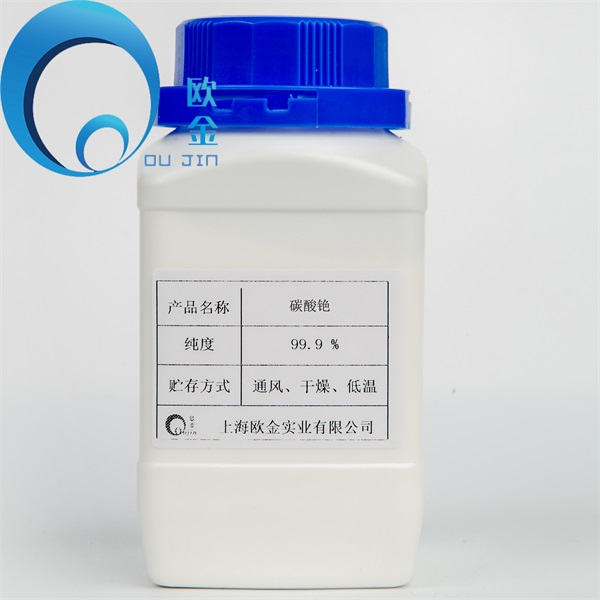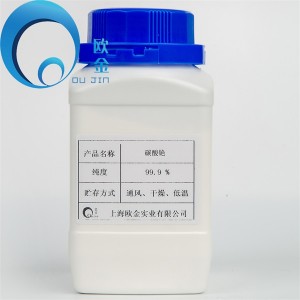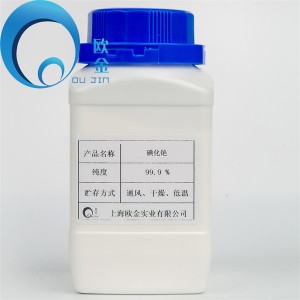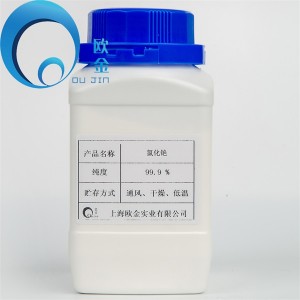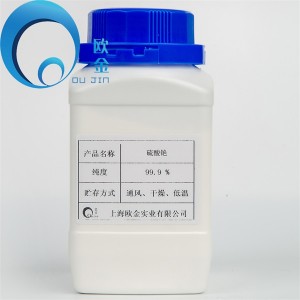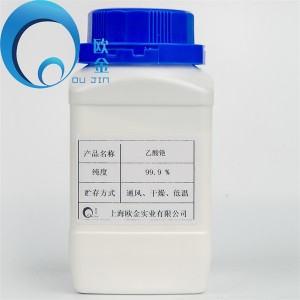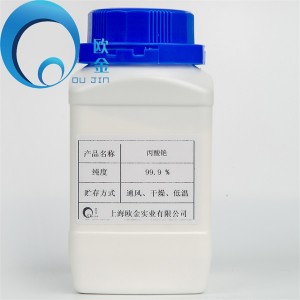
Products
Cesium Carbonate
Cesium carbonate is a kind of inorganic compound, which is white solid at room temperature and pressure. It is easily soluble in water and quickly hygroscopic when placed in the air. Cesium carbonate solution is strongly alkaline, and can react with acid to produce the corresponding cesium salt and water, and emit carbon dioxide. Cesium carbonate should be sealed, dried and stored separately from acids.
The basic information
Chinese name: cesium carbonate
English name: Cesium Carbonate
Caesium Carbonate; Cesium Carbonate; dicesium,carbonate; Carbonic acid dicesium;
CAS no. : 534-17-8
Molecular formula: Cs2CO3
Molecular weight: 325.82000
Precision quality: 325.79600
PSA: 63.19000
Physical and chemical properties
Appearance and character: white crystalline powder
Density: 4.072
Melting point: 610 ° C
Boiling point: 333.6 C at 760 mmHg
Flash: DHS 169.8 C
Water solubility: 261 g/100 mL (20 C)
Stability: Stability. Banned substances: strong oxidant, strong acid.
Storage conditions: the warehouse is ventilated and dry at low temperature
Safety information
Symbol: GHS07
Signal word: warning
Hazard statement: H315; H319; H335
Warning statement: P261; P305 + P351 + P338
Customs Code: 2836999000
WGK Germany: 2
Hazard type code: R36/37/38; R68
Safety instructions: S22-S24/25-S36/37/39-S26
RTECS number: FK9400000
Dangerous goods sign: Xn
MDL: MFCD00010957
Production methods
1.Cesium salt of sulfuric acid solution, the aluminum sulfate into them, can precipitate cesium aluminum alum, weigh and cesium aluminum alum 250 g, dissolved in 2.5 L of boiling water, stir constantly, slowly after cooling, the recrystallization of alum, repeat the above operation after refining, filter get cesium aluminum alum masterwork, match into aqueous solution, the excess barium hydroxide into them, the generated precipitation after filtration, the filtrate zhongtong into carbon dioxide gas, filtering, continue to filtrate zhongtong into carbon dioxide gas, cesium carbonate can be obtained at this time.
2. Weigh an appropriate amount of cesium chloride in a borosilicate glass container, add excessive nitric acid, remove the chlorine gas, take out the nitrate produced by the reaction, place it in a platinum dish, add four times the amount of crystalline oxalate for reaction, prepare oxalate, and then calcine the oxalate to prepare cesium carbonate. The reaction equation is:
Cs2C2O4 to calcine, Cs2CO3 + CO2
3. It is prepared by reacting cesium hydroxide with carbon dioxide.
The reaction equation is:
CsOH + CO2 – Cs2CO3 + H2O
use
Many properties of cesium carbonate in organic synthesis are derived from the soft Lewis acidity of cesium ion, which makes it soluble in organic solvents such as alcohols, DMF and ether. The better solubility in organic solvents enables cesium carbonate to participate in chemical reactions catalyzed by palladium reagents as an effective inorganic base, such as Heck, Suzuki and Sonogashira reactions. For example, Suzuki cross coupling reaction with cesium carbonate was able to obtain 86% yield, while the same reaction with sodium carbonate or triethylamine was only 29% and 50%. Similarly, in the Heck reaction of methacrylate and chlorobenzene, cesium carbonate compared with other inorganic bases, such as potassium carbonate, sodium acetate, triethylamine, potassium phosphate, showed a very obvious advantage. Cesium carbonate also has important applications in the o-alkylation of phenol compounds. It is speculated that the phenol O-alkylation reaction in cesium carbonate non-aqueous solvent is likely to experience the phenoxyethylene anion, so the alkylation reaction can also take place for the secondary halogenates with high activity and easy elimination reaction. Cesium carbonate also has important applications in the synthesis of natural products. For example, in the synthesis of Lipogrammistin-a compound in A key step closed-loop reaction, cesium carbonate as an inorganic base can be used to obtain closed-loop products with high yield. In addition, cesium carbonate has important applications in solid supported organic reactions due to its good solubility in organic solvents. Carboxylate or carbamate compounds can be synthesized at a high yield by inducing a three-component reaction of aniline with a solid supported halogen in a carbon dioxide atmosphere. Under microwave irradiation, cesium carbonate can also be used as a base to realize esterification reaction between benzoic acid and solid supported halogenates.

